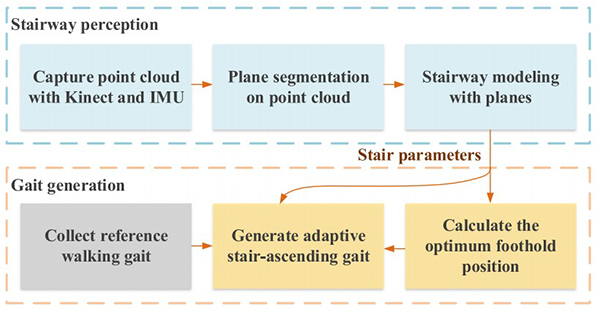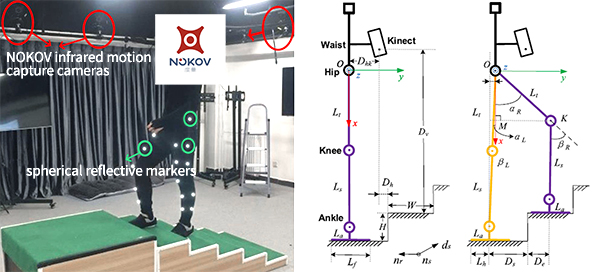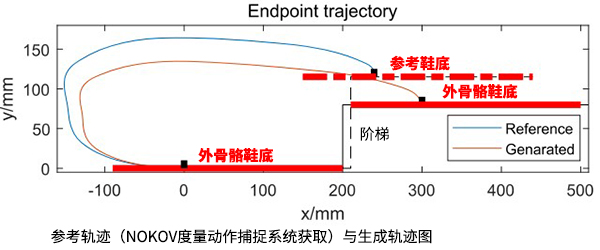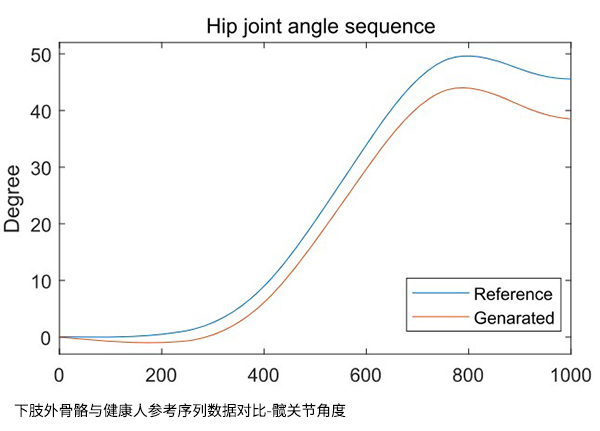Lower limb exoskeleton assists human body to bear load and drive human movement, which has broad application prospects in military operations, disaster rescue and rehabilitation treatment and other fields.

In order to make the lower limb exoskeleton suit the typical scenario of the stairs, Weihai Chen’s team from School of Automation Science and Electrical Engineering at Beihang University proposed an adaptive gait generation algorithm for the lower limb exoskeleton ascending stairs based on depth camera, on the basis of the visual-based stair perception and the gait generation method for stair ascending.

Unlike bipedal robots, lower limb exoskeletons are designed to help patients walk with a natural gait. To obtain a set of stair walking gaits as a reference, the team used NOKOV motion capture system to collect data on a series of lower limb movements of healthy individuals walking on flat ground and stairs.

The motion capture camera captures the reflective markers attached to the lower limbs, and the system calculates the 3D spatial position of each marker. The motion analysis software connects each marker with the specific position of the human body model to form a complete lower limb joint. In the study, hip joint angles and knee angles obtained by the motion capture system were expressed as gait of the lower limbs, and the gait was filtered and fitted with constraints such as the maximum speed of the motor and the range of key angles, and the optimal gait of the exoskeleton in different scenes was selected.

To evaluate the effectiveness of exoskeleton gait generation methods, the researchers performed simulated gait generation. As shown in the figure above, the bold red line is the exoskeleton sole, the black and red dotted lines are the steps and sole during the reference gait collection process, and the blue and red thin lines represent the reference trajectory and the generated trajectory respectively.

It can be seen that according to the trajectories generated from the reference values and applied to different steps, the sole is in the ideal position and the end point trajectory is reasonable, and the generated hip joint angle sequence is close to the reference sequence of healthy people. At the same time, volunteers were asked to conduct a walking test on a staircase with a height of 80-155mm, which proved the feasibility of the adaptive stair gait generation method.
Bibliography: